
Australia’s Only Travel Guide You Need For A Great Trip in 11 Easy Steps
- Destinations Oceania
Cruisit Team
- April 19, 2022
- 0
- 4613
- 59 minutes read
Australia’s Background
About 40,000 years before the first Europeans began exploring the continent in the 17th century, Aboriginal inhabitants came from Southeast Asia. There were no official territorial claims made until 1770 when Capt. James Cook seized possession in the name of the United Kingdom. Six colonies were established in the late 18th and early 19th century; they merged to become the Commonwealth of Australia in 1901.
The new country used its natural resources to swiftly expand its agricultural and manufacturing sectors, as well as to contribute significantly to the British effort in World Wars I and II. Australia has evolved into a globally competitive, advanced market economy in recent decades. During the 1990s, it had one of the fastest growing economies in the OECD, thanks in large part to economic reforms implemented in the 1980s. Long-term problems include pollution, notably ozone layer depletion, as well as management and conservation of coastal regions, including the Great Barrier Reef.
From the picturesque neighborhoods of metropolitan Melbourne and Perth to the nearly unknown Outback, where cattle ranches may be larger than most European countries, Australia, The Lucky Country, and the world’s sixth biggest country, has so much to offer.
The first decision you must make is which of the eight states you wish to visit; to be precise, two of them are territories. From the metropolis to the countrysides, each state and territory is distinct. If you want to be genuinely secluded, go to the Outback, but be prepared for extreme temperatures, with summers exceeding 40°C (104°F) and freezing winter overnight temps. Summer in Australia’s Tropical North may be humid and wet, categorized as the wet season, and is not always a pleasant time of year.
“Australia is packed with a potential for
adventure which makes it worth experienceing“
In comparison to the size of the nation, the population is relatively tiny (23.5 million people), with the bulk of the population residing on the outskirts of the country. If you’re looking for adventure, head to the lovely red core. It can be hard, and you’ll need to be prepared, but the brave can experience the beauty of Alice Springs. Or, for a whole different experience, drive south to the highlands of Victoria or Tasmania, especially when it snows!
The true adventure is renting a 4-wheel-drive vehicle and exploring thousands of kilometers of off-road paths, but bring lots of water and don’t rely on your phone; it won’t work!
Come to Australia if you want to see the most breathtaking landscape, wonderful animals, and experience the most diverse of countries.
It is impossible to see everything Australia has to offer in one week, but you will be able to tour a significant chunk of the nation. However, smart planning will help you to maximize your time and explore some of the main sights. Divers must see the Great Barrier Reef, but keep in mind that you must arrange time for flying on each side of your reef trip. In actuality, you’ll have to choose between the Reef and the Rock if you want to scuba dive in Queensland.
- Journey to Tasmania, which is located off the coast of the continent.
- The Great Barrier Reef is a great place to swim, snorkel, or dive.
- At the Australia Zoo, Home of the Crocodile Hunter, in Queensland, you may see species that are unique to the nation.
- Visit the Jrn Utzon-designed Sydney Opera House, or climb the neighboring Sydney Harbour Bridge, which has one of the greatest New Year’s Eve fireworks displays.
- View the magnificent Blue Mountains scenery.
- Take an exciting road journey to Uluru, often known as “Ayres Rock,” in Northern Territory.
- Escape to Western Australia’s Kimberley region in the north.
- Keep an ear out for the lovely sounds of Australia, one of which is the traditional, Aboriginal didgeridoo.
- Make sure you have the proper visa for your visit; border security is stringent, especially to safeguard local agriculture; and make sure you know what you are permitted to bring in because there are severe quarantine requirements. If you bring any food or other generally forbidden things, you must declare them or face a large punishment.
- Everything should be treated as though it were toxic. Australia is well-known for being home to several of the world’s most hazardous creatures, both on land and in the ocean.
- Never swim in a pool at random without prior information and investigation.
- Don’t underestimate the immensity of the nation, as well as the amount of time and distance necessary to really experience it.
- As previously noted, if you’re going off-road or are unfamiliar with the terrain, bring lots of water and be prepared to lose mobile phone coverage!
- Except for New Zealanders, all visitors to Australia require a visa – either electronic or paper – to enter the nation. Almost all applications are now created and submitted online.
- Tipping is not as common in Australia as it is in Europe and the United States.
Although Australia is a reasonably secure country, it is gradually following the American pattern in terms of gun-related occurrences. This isn’t to imply there isn’t minor crime, but you’re more likely to be victimized by another visitor or an opportunist: theft does occur at hostels, and many provide lockers. However, if you leave valuables laying about, you might expect them to disappear.
Violence is more likely to occur at or around bars — almost always alcohol-fueled and frequently on a Friday or Saturday night in undiscovered small towns or large cities. Strangers seldom get involved without provocation, so keep your wits about you in metropolitan nightlife hotspots like Sydney’s Kings Cross, which is also a hotbed for drug-related violence.
Summers along the seaside are consistently warm, with frequent but brief heatwaves in excess of 40°C. As you travel inland, the temperature rises even further. Winters, on the other hand, may be depressing, especially in Victoria, where the short days add to the melancholy. The greatest time to visit Tasmania is all year: while the weather in the highlands is unpredictable at all times, summer is the finest time of year to enjoy the island’s outdoor attractions.
In general, the ideal time to visit the south is during the Australian summer, which runs from December to March, while extended summer holidays from Christmas to January raise prices and make beaches more crowded. The ideal months to visit the tropical north are from May to October, whereas the best months to visit the Centre are from October to November and March to May. If you want to do a lot of touring, stick to the southern shores in the summer and travel north in the winter.
May through June is the off-season, but keep in mind that what is summer in the United States is winter in Australia. Shoulder season, which runs from February to April and September to early December, is less expensive than peak season but more expensive than off-season.
By Plane
Flights to east coast cities are available every day from Europe, North America, and Southeast Asia. Fares vary according to season, with the two weeks before and after Christmas being the most expensive. Fares are lower during the “shoulder” seasons – late February to May and mid-August to November – and the greatest deals are available during the low season, June to mid-August. Because of the distance from the majority of popular departure places, flying on weekends has little effect on the price. There are daily flights from Europe, North America, and Southeast Asia to numerous Australian cities. Fares vary according to season, with the highest being the two weeks before Christmas and the lowest being during the “shoulder” seasons, which range from late February to June and October to November. Because of the distance involved from the majority of popular departure places, flying on weekends has little effect on the price.
By Plane
Budget airlines such as Jetstar and Virgin Australia have teamed up with national carrier Quantas to reduce ticket prices, making flying the most popular mode of interstate travel. Regional flights are supplied by smaller airlines like Regional Express, popularly known as Rex, which serves New South Wales, Victoria, South Australia, and Tasmania, as well as state-based enterprises like Air North in the Northern Territory.
By Train
The southeast has a relatively extensive rail network, with interstate lines connecting the whole east coast from Cairns to Sydney, and then to Melbourne and Adelaide. Each state has its own train system. Great Southern Railway operates the services, which are aimed at the holiday experience rather than the act of going from A to B. Rail Australia is a one-stop shop for cross-state and interstate rail travel, featuring route maps for all lines and connections to the relevant train companies.
By Bus
Greyhound Australia, which spans the entire nation, is the biggest interstate bus carrier on the continent. Premier Motor Service stops along the east coast between Melbourne and Cairns, whereas Integrity Coach Lines runs from Perth to Broome, circling inland as well. Firefly Express, which travels from Sydney to Adelaide via Canberra and Melbourne, provides the lowest rates on these itineraries. Tassielink and Tasmanian Redline Coaches serve Tasmania. However, keep in mind that bus tickets might be as expensive as flying, and don’t forget how stressful bus travel can be. Not only that, but there aren’t many regular services.
By Car
Stick to the east coast, and public transportation will meet the majority of your demands. However, in order to really tour Australia, you will need your own car. Only then will the country’s unique national parks, secluded beaches, and Outback villages be accessible. If your journey will last four months or more, purchasing a car may be the most cost-effective option. On shorter vacations, renting is the ideal option — if not for the entire trip, then for brief hours between bus rides, allowing you to really explore a region. In Australia, most international licenses are valid for one year. If you are from a non-English-speaking country, an International Driving Permit (available from national motoring organizations) may be beneficial.The biggest risks include boredom and exhaustion, as well as animal collisions. Avis, Europcar, Hertz, and Thrifty are among the vehicle rental businesses offered in Australia.
Internet connection – whether via wi-fi or at internet cafés – is pervasive, simple, and inexpensive. Wi-Fi is frequently offered in cities, often for free or for a nominal daily fee, at cafés, most hostels, and many hotels. Otherwise, most hostels and hotels offer terminals for their visitors, which normally cost Aus$3–6 per hour, but some still employ inconvenient coin- or card-operated kiosks. Access is also accessible at libraries, however you must pay for it.
Buy a Skyroam Solis for limitless Wi-Fi on the road when traveling Australia. It works in 130+ countries for one set daily charge, paid for on a pay-as-you-go basis. You can connect up to five devices at the same time. Prices start as low as €5 per day.
A SIM card for your phone may be purchased for as low as $2. Telstra has the most extensive coverage, claiming that their Next 3G service reaches 99 percent of Australia. Vodafone lags much behind in terms of cross-coverage, yet it may be cheaper for urban use alone. The other main networks are Optus and Three. Each offers a coverage map/checker on its website, which is worth checking out because reception goes down in rural locations. A satellite phone is one option for assured reception (although at a higher call cost). These are somewhat larger than ordinary mobile phones and may be hired from rentasatphone.com.au for roughly Aus$18 per day for up to a fortnight’s rental, or Aus$8 per day for up to three months, and can operate both standard and satellite SIM cards.
Top Places in Australia
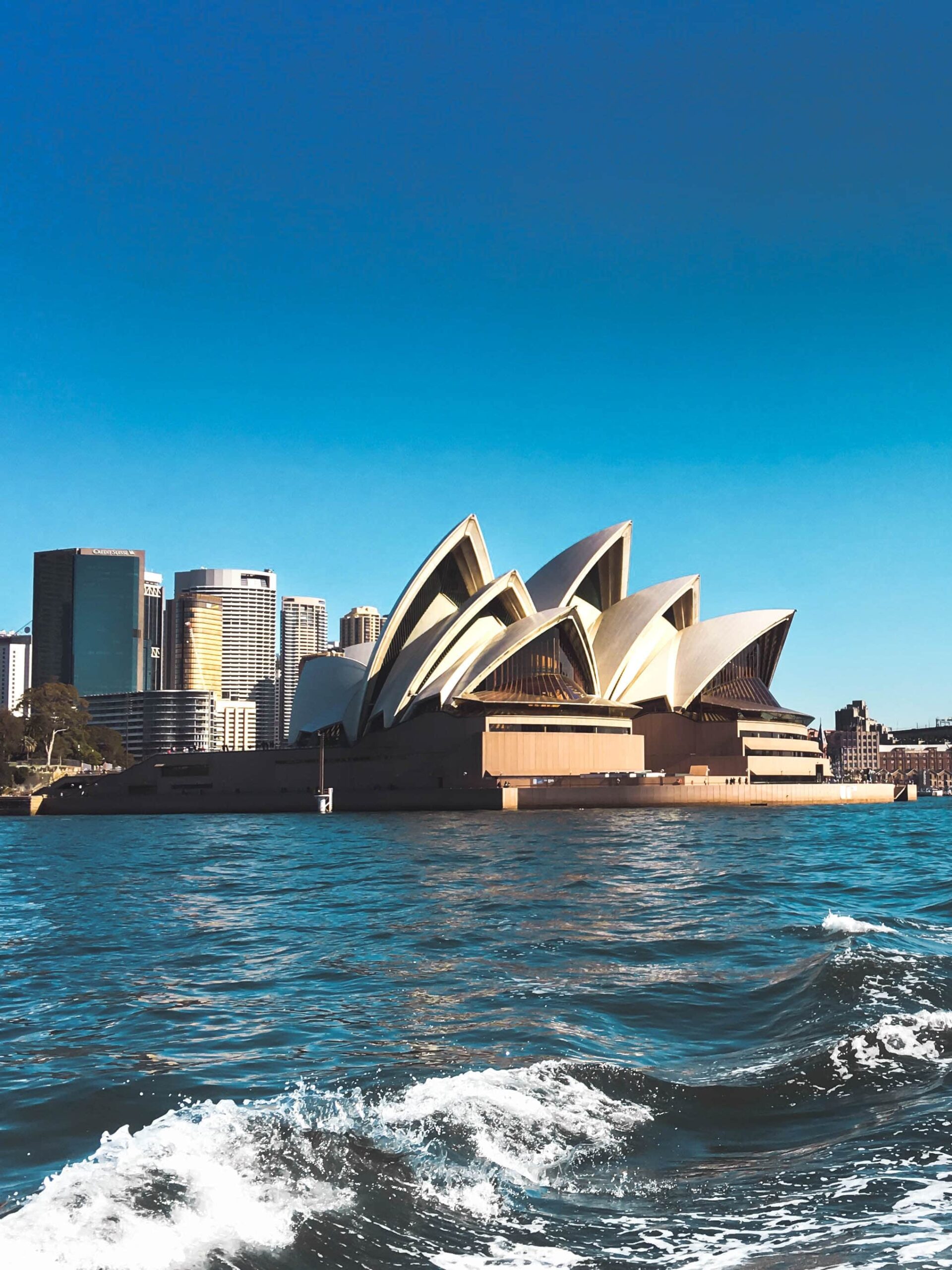
Sydney Opera House
When most people hear the words “Sydney, Australia,” they immediately think of the Sydney Opera House. The setting is breathtaking. The building is surrounded by water on three sides, and the Royal Botanic Gardens border it on the south. Theaters, studios, a music hall, exhibition halls, and a cinema are all part of the complex. It is now receiving a 10-year, $275-million refurbishment, however it will remain operational during this time. Mrs Macquarie’s Chair is one of the greatest places to shoot this popular Sydney tourist landmark.
The Great Barrier Reef Marine Park
The Great Barrier Reef Marine Park was assembled in 1975 to safeguard the reef’s vulnerable ecosystems. More than 3,000 coral reefs, 600 islets, 300 coral cays, and inshore mangrove islands are among them. The park, one of the seven natural wonders of the world, runs over 2,300 kilometers along Australia’s east coast. Soft and hard corals, more than 1,600 tropical fish species, sharks, dugongs, dolphins, turtles, rays, and gigantic clams are among the amazing marine life. Because of the size of this ecosystem, it can even be seen from space.


Uluru-Kata Tjuta National Park
Uluru-Kata Tjuta National Park is a World Heritage Site co-managed by Parks Australia and the Aangu people, the traditional proprietors. Uluru, which means “shadowy spot” in the local Aboriginal tongue, rises 348 meters above the surrounding plain. Joining a tour conducted by Aboriginal guides and rangers is a terrific opportunity to appreciate these holy locations. The park also has the red dome-shaped rocks known as Kata Tjuta (the Olgas).
Blue Mountains National Park
Blue Mountains National Park is a popular day trip from Sydney and lies 81km west of the city. A UNESCO World Heritage Site, this stunning park protects more than 664,000 acres of wilderness. Hiking, abseiling, rock climbing, mountain biking, and horseback riding are all popular things to do in the park. The most famous attractions are the towering sandstone rock formations called the Three Sisters.
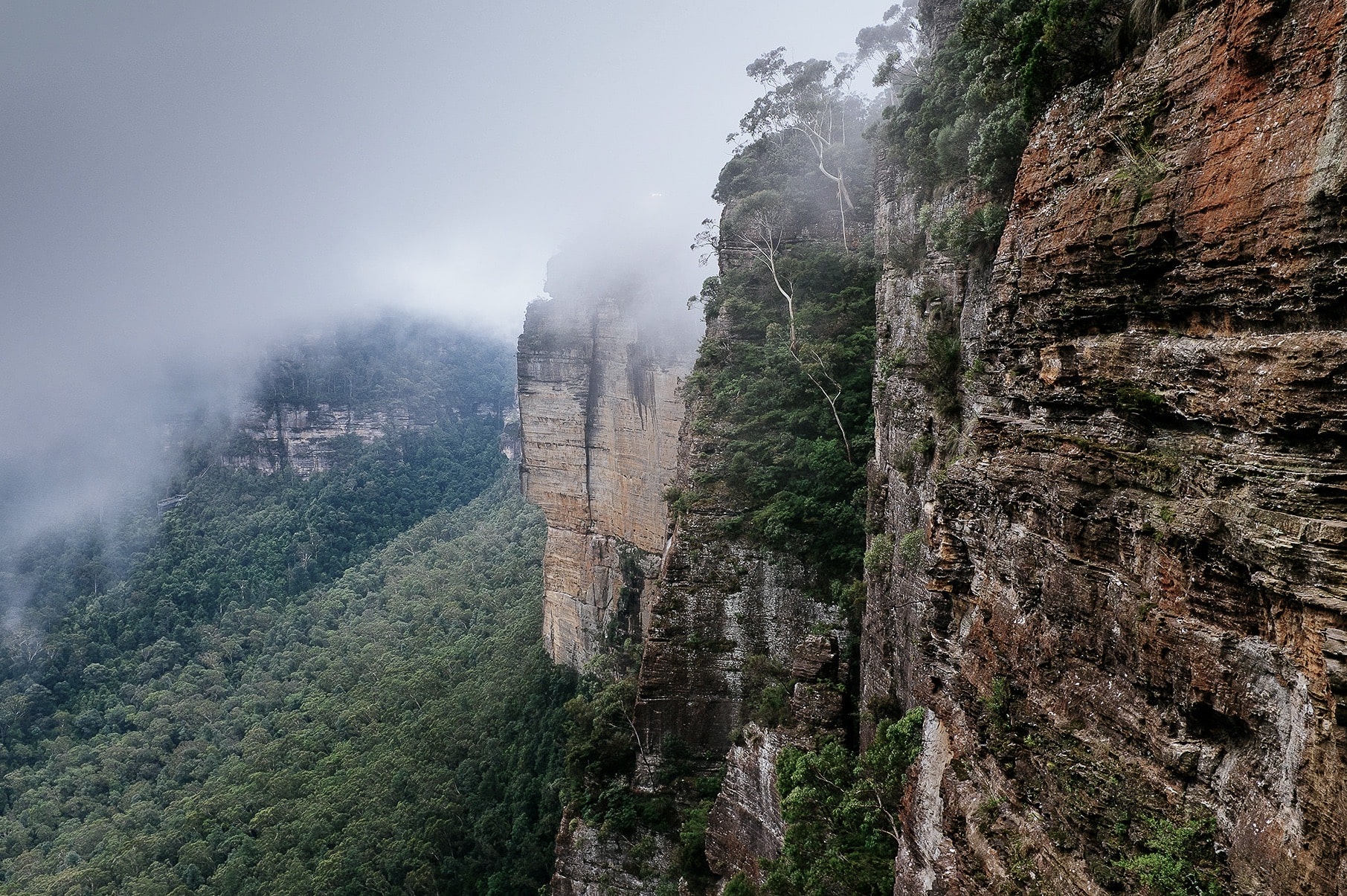

Bondi Beach
Bondi Beach is an excellent place to experience Sydney’s beach lifestyle. Walk the Bondi to Bronte coastline walk while strolling along this world-famous beach. You may also go shopping at Sunday markets or swim in the seaside pool. Strong rip tides frequently take unwary swimmers out to sea, particularly at the southern end.
Daintree National Park
The Daintree National Park in Far North Queensland is one of the world’s oldest ecosystems. Mossman Gorge, where crystal-clear rivers cascade over granite rocks, and Cape Tribulation are two of Australia’s most picturesque tourist destinations. The park’s incredible biodiversity includes over 18,000 plant species and a diverse range of animal species. Accommodation in Port Douglas is likely your best chance for arranging wilderness excursions into the park.

7-day Itinerary in Australia (with extension options)
Days 1 (with possible 1 day extension)
Arrive in Sydney
Check into your hotel and spend whatever time you have upon arrival recovering from the almost-guaranteed jet lag. If you arrive in the morning and have a full day ahead of you, try to stay up. Hit the nearest cafe for a shot of caffeine to keep you going. Head to Circular Quay, and from there, get a fantastic view of Sydney Harbour Bridge before strolling to the Sydney Opera House and soaking up some history at The Rocks. If you have time, take the ferry from Circular Quay to Manly beach and round off a fairly easy day with fish and chips. Then head to bed for some much-needed sleep.

- Budget: Friends Hostel
- Mid-range:
- High end:
This section will be added shortly.
This section will be added shortly.

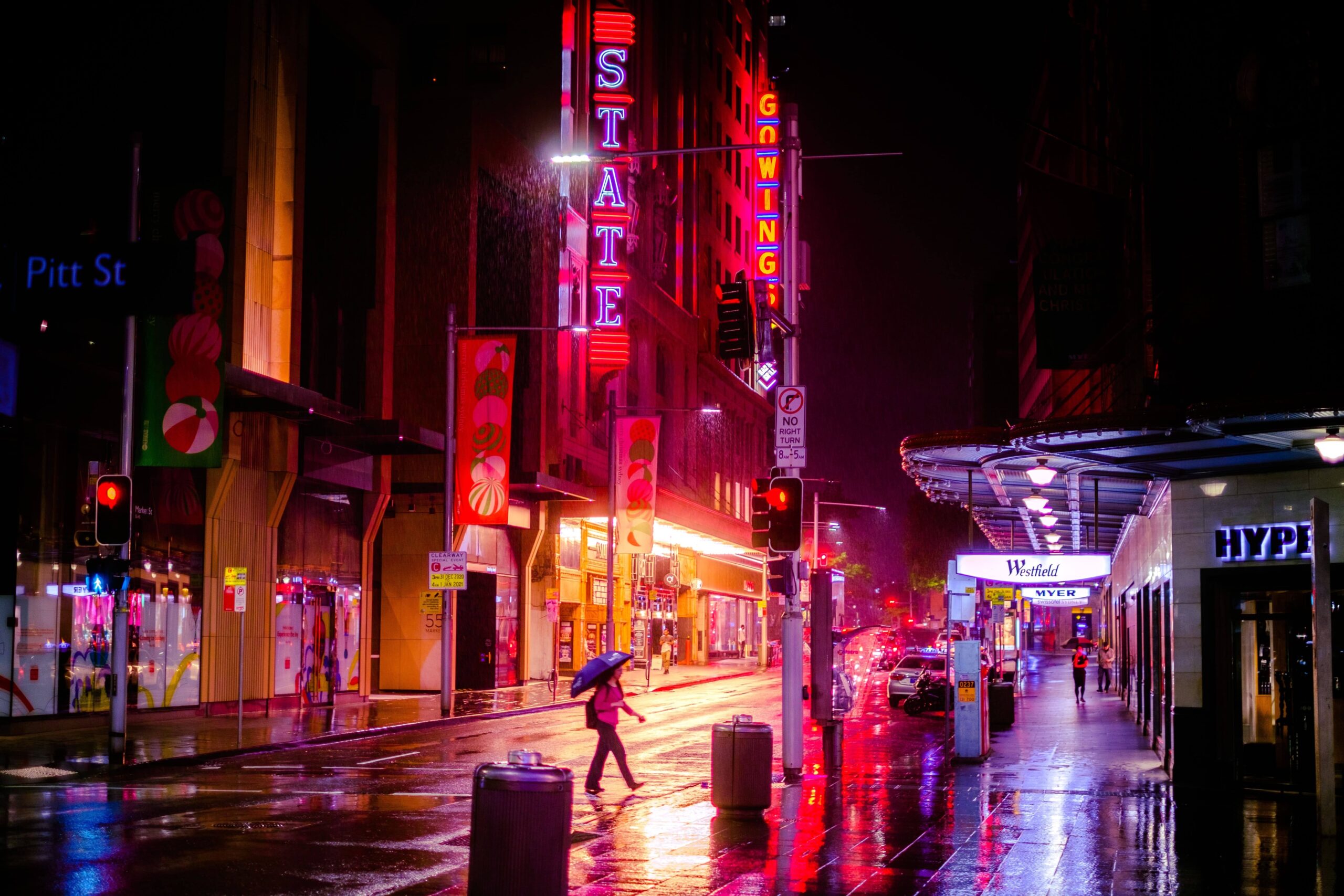
Days 2+ (with possible 1 day extension)
Explore Sydney
Start with a ride to the top of the Sydney Tower to experience Sydney’s highest open-air attraction, Skywalk, a breathtaking 260 m (853 ft.) above Sydney. Harnessed onto a moving, glass-floored viewing platform that extends out over the edge of the tower, you can view all of Sydney’s landmarks, including the Sydney Harbour Bridge, the Sydney Opera House, Sydney Harbour, and even the Blue Mountains beyond. Don’t worry, it’s not actually as scary as it sounds.
For an introduction to Australia’s wildlife, head to Taronga Zoo or the Sydney Aquarium. If you have time to spare, another great choice is Featherdale Wildlife Park, but keep in mind it’s about an hour and a half from the city center. If you enjoy museums, put the Australian Museum, the Australian National Maritime Museum at Darling Harbour, and the interactive Powerhouse Museum on your list for the day. For an insight into Sydney’s beginnings as a convict settlement, visit the Hyde Park Barracks Museum, a convict-built prison. Finish off your day with a twilight (or later on weekends) BridgeClimb up the Sydney Harbour Bridge
Days 3+
The Blue Mountains
Take the train from Central Station to Katoomba for a day, exploring the beauty of the Blue Mountains—only 2 hours from Sydney. Once there, jump on the Blue Mountains Explorer bus , which allows you to hop on and off wherever you please. There are also many day-tour operators running to the Blue Mountains from Sydney. Whichever mode of transport you use, don’t miss the spectacular Three Sister rock formations, best viewed from Echo Point Road at Katoomba. Make sure you also spend some time at Scenic World , where you can ride the world’s steepest railway into a valley full of ancient rainforest, and come back up on a cable car—among other adventures that kids especially will enjoy. At the end of the day, head back to Sydney and have dinner somewhere with a view of the harbor.

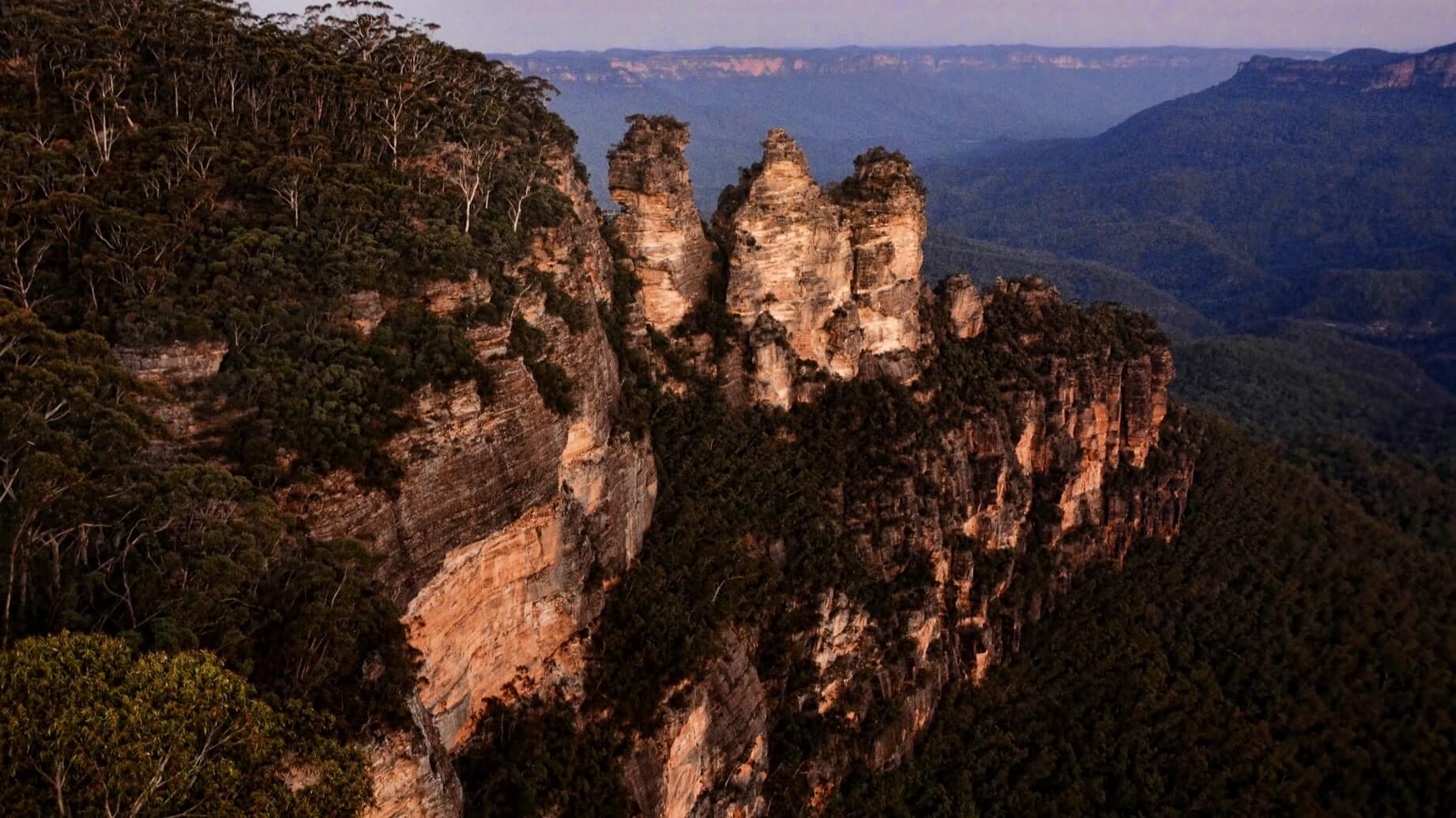


Days 4+
Cairns, the Gate to the Great Barrier Reef
Take the earliest flight you can from Sydney to Cairns—flight time is 3 hours—and check into a hotel in the city, which on such a tight schedule will make getting to the major attractions quicker and easier than staying on the out-of-town northern beaches. Explore the city a little and see some wildlife—including a massive saltwater crocodile—in the bizarre setting of the Cairns Wildlife Dome, atop the Hotel Sofitel Reef Casino. You will have the rest of the day to head out to visit the Tjapukai Aboriginal Cultural Park. If you are not going to the Red Centre, this is a great place to learn about Aboriginal culture and life, albeit in a theme-park kind of way. You could spend several hours here, or save the visit for the evening, when Tjapukai by Night tours offer a different look at traditional ceremonies, including dinner and a fire-and-water outdoor show.
This section will be updated shortly
This section will be updated shortly
This section will be updated shortly
Days 5+
Explore The Reef
Day trips to the Great Barrier Reef leave from the Reef Fleet Terminal. The trip to the outer reef takes about 2 hours, and once there, you will spend your day on a pontoon with about 300 people. Experienced divers may prefer to take a day trip with one of several dive charter companies that take smaller groups and visit two or three reefs. The pontoons of the big operators also offer the chance to take a scenic flight—a truly spectacular experience. Divers must spend another 24 hours in Cairns before flying. If you are content to snorkel, ride the glass-bottom boats, and soak up the sun, you will be able to fly the next day. After returning to Cairns, take a stroll along the Esplanade and eat at one of the busy cafes and restaurants that line the strip.



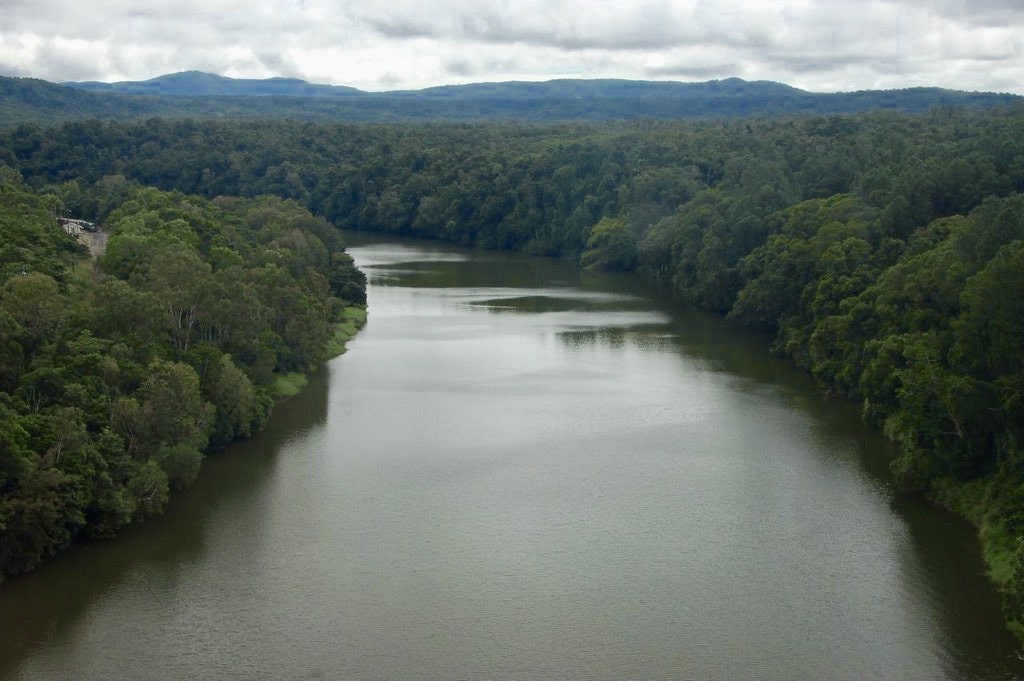
Days 6+
The Rainforest Village of Kuranda
Waiting out the day after diving (you can’t fly for 24 hours after you’ve been on a dive) can give you a chance to discover another aspect of Australia—its rainforests. Take a trip to the mountain village of Kuranda aboard the steam train along the Kuranda Scenic Railway, past waterfalls and gorges. In Kuranda, explore the markets and the nature parks and maybe take a Kuranda Riverboat Tour, which runs about 45 minutes. Return on the Skyrail cableway, which carries you over the rainforest (you can get to ground level at a couple of stations on the way) to the edge of Cairns. The views are sensational. This is a big day out!
This section will be updated shortly.
This section will be updated shortly.
This section will be updated shortly.
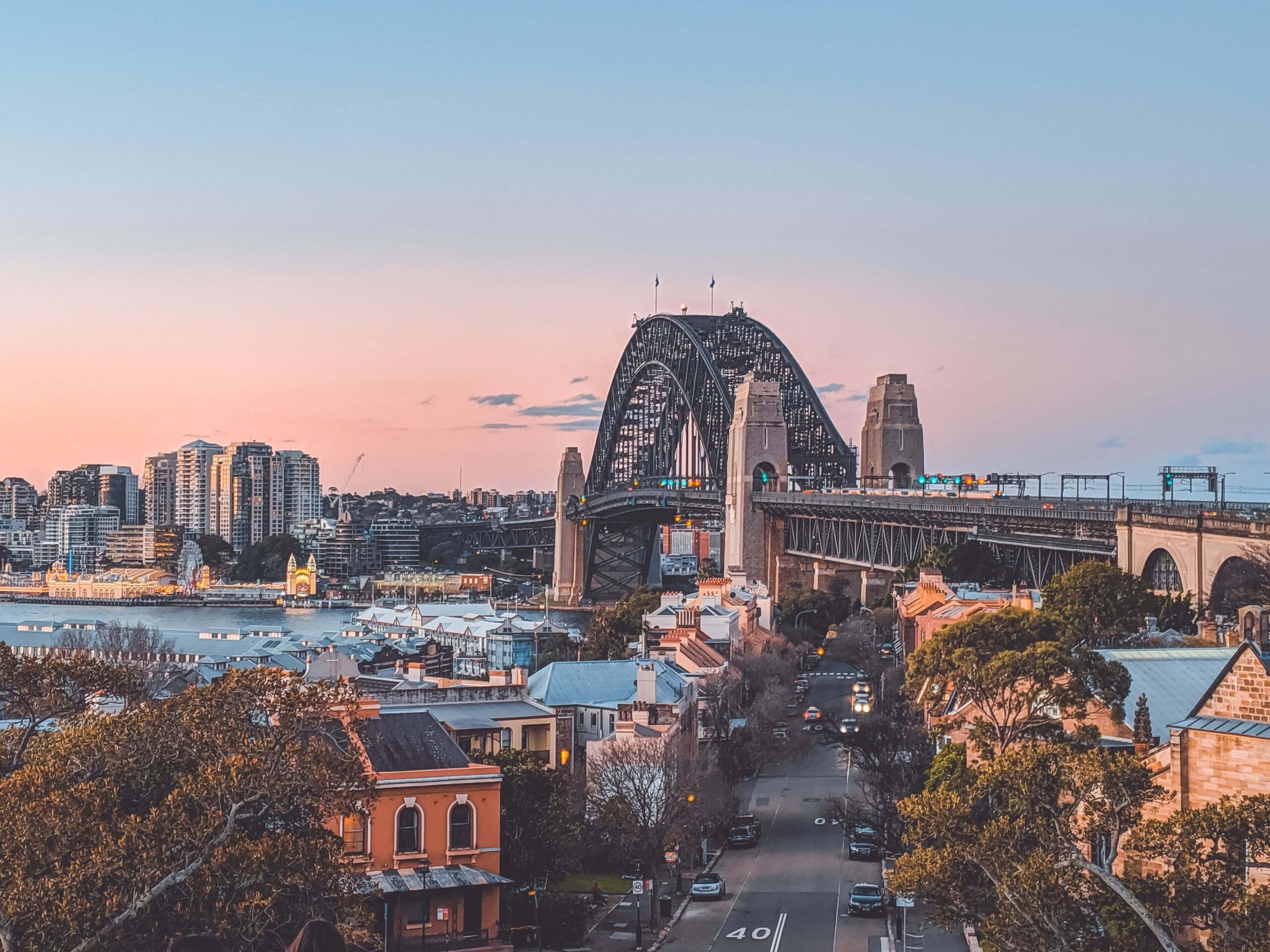
Days 7+
Cairns to Sydney
In the morning, head to the airport for your flight to Sydney. Unless you are lucky enough to have an international flight directly out of Cairns, you will spend most of your last day in Australia returning to Sydney. With the time you have left in Sydney, treat yourself to dinner at a restaurant overlooking the harbor, with its bridge and Opera House illuminated. It’s a sight you’ll carry home with you.
The Most Popular Food in Australia
Until the 1950s, British and Irish dietary habits greatly affected early Australian cuisine, and for most Australians, it reminded them of ‘home.’ The Anglo-Celtic forefathers instilled a love of meat-and-three-vegetable dinners, robust puddings, and tea and beer. Not to mention the Aboriginal (Original land dwellers) diet can also be seen in many traditional Aussie dishes. Chinese, Thai, Japanese, Lebanese, French, African, and Greek cuisines have also had a profound effect on Australian preferences, and major cities offer a diverse range of restaurants. Australian chefs are well-known across the world for their fusion cuisine, which combines classic European cooking with Asian ingredients.

Aussie Meat Pie
Aussie Meat Pie is a traditional Australian dish that has come to symbolize the country’s identity. While the rest of the world enjoys pie for dessert, the Australians have fashioned their own kind of pie and made it a vital part of their gastronomic culture. Special pie stores may be found all around the country, and they are quite popular. Cheese, minced beef, onions, gravy, and mushrooms are used to make the Aussie meat pie. These components are then supplemented with an unique sauce, which adds the finishing savory touch. If you want to experience traditional Australian cuisine, the Aussie meat pie is hard to beat.
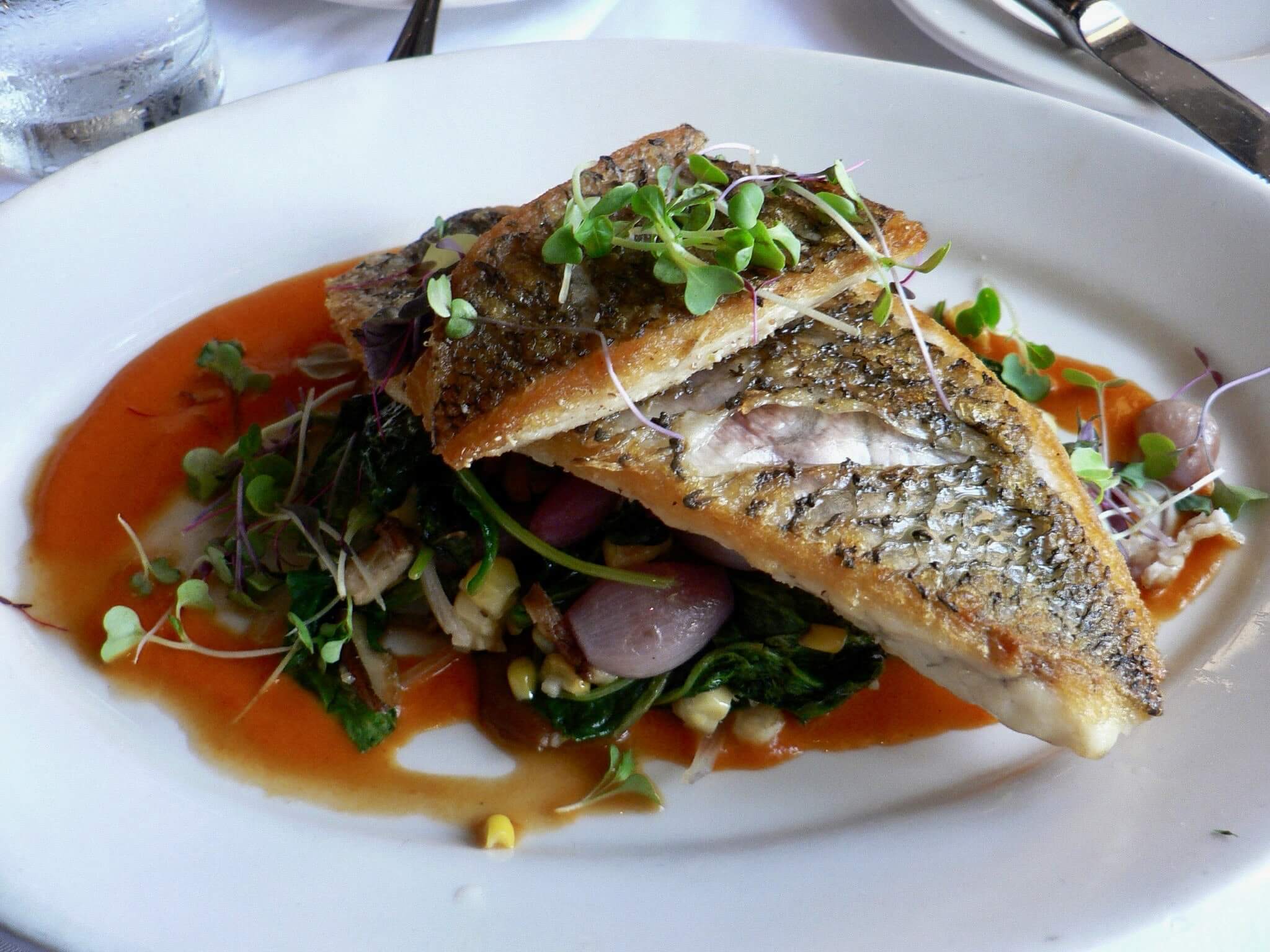
Barramundi
Another delicacy from Australian cuisine that you should not pass up is barramundi. The actual meaning of the name in Aboriginal language is “large-scaled river fish.” While it may be found all around the country, Queensland is regarded for having the best Barramundi.

Lamb Leg Roast
The lamb leg roast is carefully prepared in Australia, and the natives take great delight in this meal. Aside from the apparent primary component, the remaining ingredients include a fairly minimal list of olive oil, garlic, and rosemary. At restaurants, the dish is typically served with baked potatoes, and it is regarded as a hearty lunch that would round off a long day in Aussie country nicely.

Witchetty Grub
Witchetty Grub is a traditional meal of the Aboriginal people, Australia’s indigenous people. It’s essentially a giant wood-eating moth larva that’s edible and high in protein. Some people prefer to eat it raw, although adding peanut sauce and grilling it is also popular. Witchetty Grubs may not be something that the average Australian eats on a daily basis, but it is a distinctive form of Australian food.

Grilled Kangaroo
Foreigners, who frequently appreciate these robust creatures, may find eating a kangaroo to be fairly contentious. It’s Australia’s national animal, but shooting is still permitted, so you’ll find grilled kangaroo all throughout the country. This is also the only spot on the planet where kangaroos can be found in their native habitat, and roasted kangaroo is a staple of Australian cuisine. Kangaroo meat is considered lean and low in saturated fats, thus it’s also highly healthful.
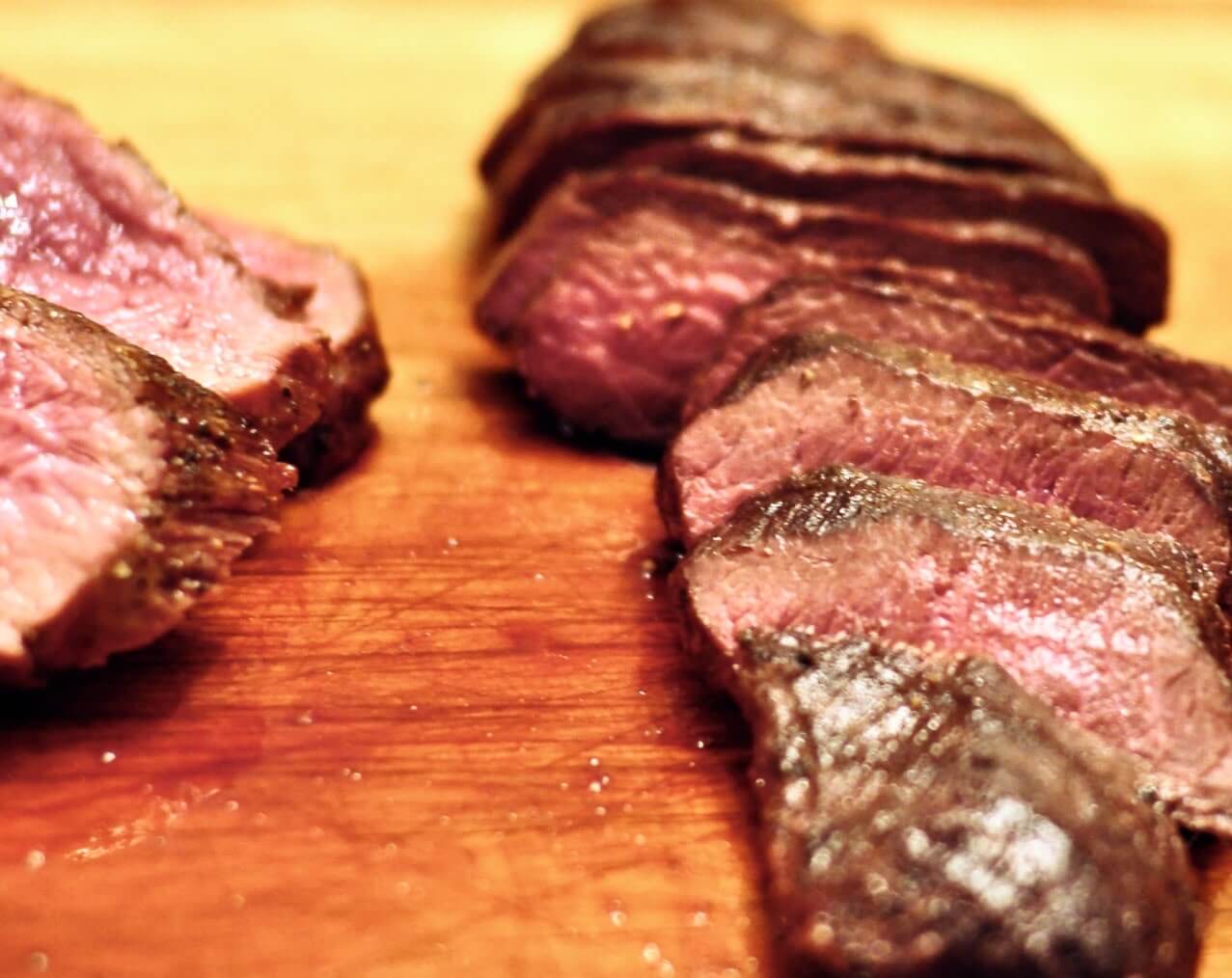
Barbequed Emu
This Australian bird is both an Aboriginal and an Australian delicacy. Typically mixed with oil, vinegar, tomato, mustard, garlic, and sugar, then marinated. Then grilled over charcoal until browned, with the marinade brushes on the grill providing the most taste.
What's the Travel Budget in Australia?
Flights
- Flights start at roughly $500 from nearby countries. Tickets however on average cost around $900 and can cost more depending on which class and from which country you depart from.
Accommodation
- Nomad Backpacking style travelers can expect to spend around $360 for a week
- Budget travelers can expect to spend around $730 for a week
- Mid-range travelers can expect to spend around $950 for a week
- Luxury travelers can expect to spend around $1800 for a week
Food Budget (Three meals and drinks)
- Nomad Backpacking style travelers can expect to spend around $25 per person per day
- Budget travelers can expect to pay around $40 per person per day
- Mid-range travelers on average would cost $45 to $60 per person per day
- Luxury travelers can expect to pay around $100 to $140 per person per day
Overall Budget Styles (Not including Flights, Tours, Transportation, or Car Rental)
- Nomad Backpacking style travelers can expect to spend around $550 for a week
- Budget travelers can expect to spend around $1100 for one person for a week
- Mid-range travelers can expect to spend around $1450 for one person for a week
- Luxury travelers can expect to spend around $2850 for one person for a week
Flights
- Flights start at roughly $500 from nearby countries. Tickets however on average cost around $900 and can cost more depending on which class and from which country you depart from.
Accommodation
- Nomad Backpacking style travelers can expect to spend around $360 for a week
- Budget travelers can expect to spend around $730 for a week
- Mid-range travelers can expect to spend around $950 for a week
- Luxury travelers can expect to spend around $1800 for a week
Food Budget (Three meals and drinks)
- Nomad Backpacking style travelers can expect to spend around $25 per person per day
- Budget travelers can expect to pay around $40 per person per day
- Mid-range travelers on average would cost $45 to $60 per person per day
- Luxury travelers can expect to pay around $100 to $140 per person per day
Overall Budget Styles (Not including Flights, Tours, Transportation, or Car Rental)
- Nomad Backpacking style travelers can expect to spend around $550 for a week
- Budget travelers can expect to spend around $1100 for one person for a week
- Mid-range travelers can expect to spend around $1450 for one person for a week
- Luxury travelers can expect to spend around $2850 for one person for a week
Flights
- Flights start at roughly $500 from nearby countries. Tickets however on average cost around $900 and can cost more depending on which class and from which country you depart from.
Accommodation
- Nomad Backpacking style travelers can expect to spend around $360 for a week
- Budget travelers can expect to spend around $730 for a week
- Mid-range travelers can expect to spend around $950 for a week
- Luxury travelers can expect to spend around $1800 for a week
Food Budget (Three meals and drinks)
- Nomad Backpacking style travelers can expect to spend around $25 per person per day
- Budget travelers can expect to pay around $40 per person per day
- Mid-range travelers on average would cost $45 to $60 per person per day
- Luxury travelers can expect to pay around $100 to $140 per person per day
Overall Budget Styles (Not including Flights, Tours, Transportation, or Car Rental)
- Nomad Backpacking style travelers can expect to spend around $550 for a week
- Budget travelers can expect to spend around $1100 for one person for a week
- Mid-range travelers can expect to spend around $1450 for one person for a week
- Luxury travelers can expect to spend around $2850 for one person for a week
Flights
- Flights start at roughly $500 from nearby countries. Tickets however on average cost around $900 and can cost more depending on which class and from which country you depart from.
Accommodation
- Nomad Backpacking style travelers can expect to spend around $360 for a week
- Budget travelers can expect to spend around $730 for a week
- Mid-range travelers can expect to spend around $950 for a week
- Luxury travelers can expect to spend around $1800 for a week
Food Budget (Three meals and drinks)
- Nomad Backpacking style travelers can expect to spend around $25 per person per day
- Budget travelers can expect to pay around $40 per person per day
- Mid-range travelers on average would cost $45 to $60 per person per day
- Luxury travelers can expect to pay around $100 to $140 per person per day
Overall Budget Styles (Not including Flights, Tours, Transportation, or Car Rental)
- Nomad Backpacking style travelers can expect to spend around $550 for a week
- Budget travelers can expect to spend around $1100 for one person for a week
- Mid-range travelers can expect to spend around $1450 for one person for a week
- Luxury travelers can expect to spend around $2850 for one person for a week
If you want to know what to pack, read this list below:
- This is a casual country that can get extremely hot, dress accordingly
- Raincoat or Light Waterproof Jacket
- Hiking Boots or Sturdy Sneakers (Shoes You Don’t Mind Getting Wet)
- Sunscreen
- Insect Protection – Repellent and Clothing
- Sunglasses and Sun Hat
- Water Shoes
- Beach Towels/Sarong
- Dry Bag
- Money Belt or Cross Bag
- Portable Medical Kit
- Flashlight or Headlamp
- Copies of your passport.
- Get all the needed vaccinations before traveling
- A power bank is a must in any travel.
- Always have some cash with you just in case there are no ATMs and if you are dealing with a business that solely accepts cash
- Get yourself an adapter for your gadgets
- 1 toothbrush
- 1 tube of toothpaste
- 1 razor
- 1 package of dental floss
- 1 small bottle of shampoo
- 1 small bottle of shower gel
- 1 towel
- Deodorant
- Band-Aids
- Hydrocortisone cream
- Antibacterial cream
- Earplugs
- Tylenol
- Hand sanitizer (germs = sick = bad holiday)
- A key or combination lock
- Zip-lock bags
- Plastic bags (great for laundry)
- Universal charger/adaptor
- LifeStraw (A water bottle with a purifier)
- 1 dry shampoo spray & talc powder
- 1 hairbrush
- Makeup you use
- Hairbands & hair clips
- Feminine hygiene products
Clothing For Boys
- 1 pair of jeans or khaki pants
- 1 pair of shorts
- 1 bathing suit
- 5 T-shirts
- 1 long-sleeved T-shirt
- 1 pair of flip-flops
- 1 pair of sneakers
- 6 pairs of socks
- 5 pairs of boxer shorts
Clothing For Girls
- 1 swimsuit
- 1 sarong
- 1 pair of stretchy jeans
- 1 pair of leggings
- 2-3 long-sleeve tops
- 2-3 T-shirts
- 3-4 spaghetti tops
- 1 light cardigan
Want to plan your own trip, here are some of the best resources that can help you
- Skyscanner – They search small websites and budget airlines that larger search sites tend to miss. They are hands down the number one place to start.
- Momondo – This is another favorite flight search engine because they search such a wide variety of sites and airlines. Always check here too.
- Booking.com – The best all-around booking site that constantly provides the most affordable and lowest rates. They have the widest selection of budget accommodation.
- Couchsurfing – This website allows you to stay on people’s couches or spare rooms for free. It’s a great way to save money while meeting locals who can tell you the ins and outs of their city. The site also lists events you can attend to meet people (even if you’re not staying with someone).
- Intrepid Travel – If you want to do group tours, go with Intrepid. They offer good small group tours that use local operators and leave a small environmental footprint.
- Grassroots Volunteering – For volunteering, Grassroots Volunteering compiles a list of good local volunteer organizations that keep the money within the community.
- Get Your Guide – Get Your Guide is a huge online marketplace for tours and excursions. They have tons of tour options available in cities all around the world, including everything from cooking classes, walking tours, street art lessons, and more! It has the world’s largest collection of things to do with more than 30,000 activities in 7500 destinations.
- SafetyWing – Safety Wing offers convenient and affordable plans tailored to digital nomads and long-term travelers. They have cheap monthly plans, great customer service, and an easy-to-use claims process that makes it perfect for those on the road.
- Trip Advisor: Check the reviews and then book your accommodation. TripAdvisor is where you go when you want to compare prices with multiple accommodation providers.
- VRBO: is the main search engine to use when you are looking for a home or apartment rental. It can sometimes be cheaper than hotels and it is the best way to stay in areas that offer a more local feel.
- Hostelworld: With one of the largest databases of hostels in the world, Hostelworld is the go-to site when you are looking for budget accommodation.
- Rome 2 Rio: If you want to see how to get somewhere by plane, train, bus, ferry, or car Rome2Rio lays it all out for you as well as related costs.
- World Nomads Insurance: When traveling you should always have travel insurance. We have found the best bang for your buck is by far World Nomads.
Final Thoughts on Australia
From the Great Barrier Reef to Sydney and beyond, Australia packs a punch for those looking to have a unique experience in the midst of a bustling city, and in the wild. Would you visit Australia?
Have you ever been there?
Let us know in the comments below.